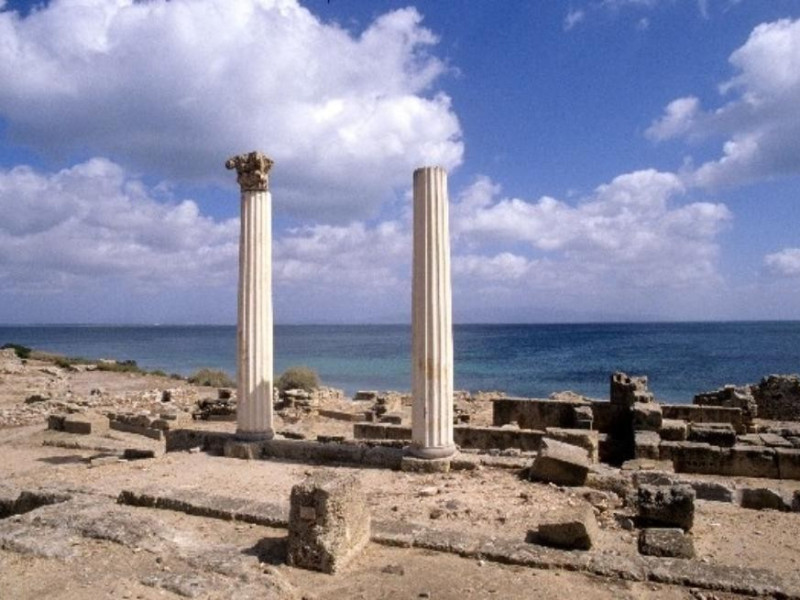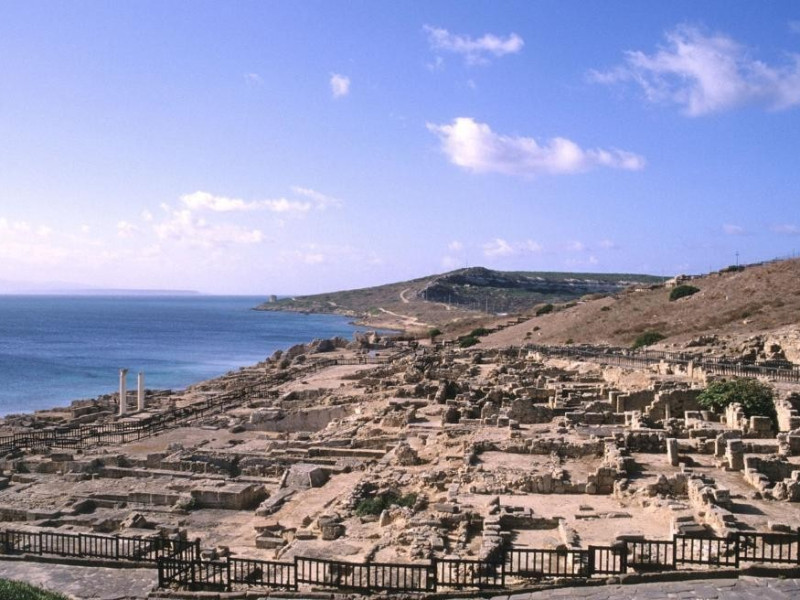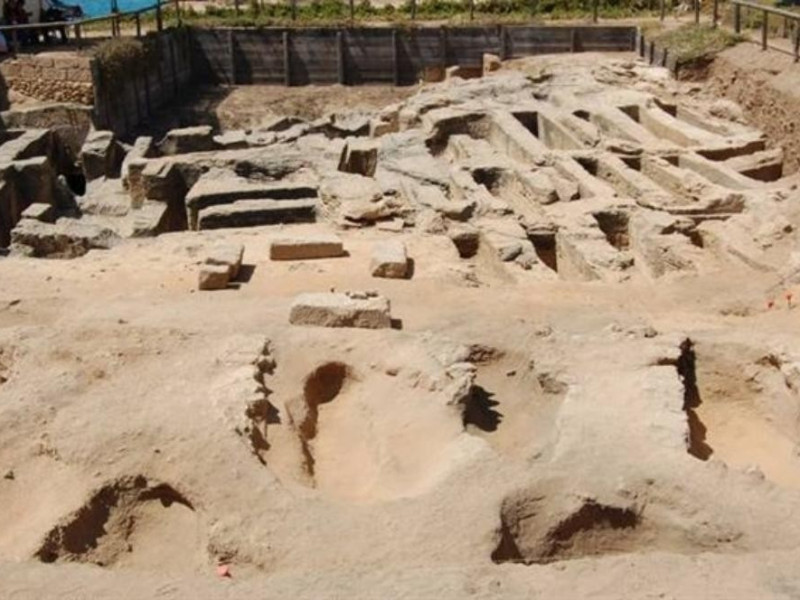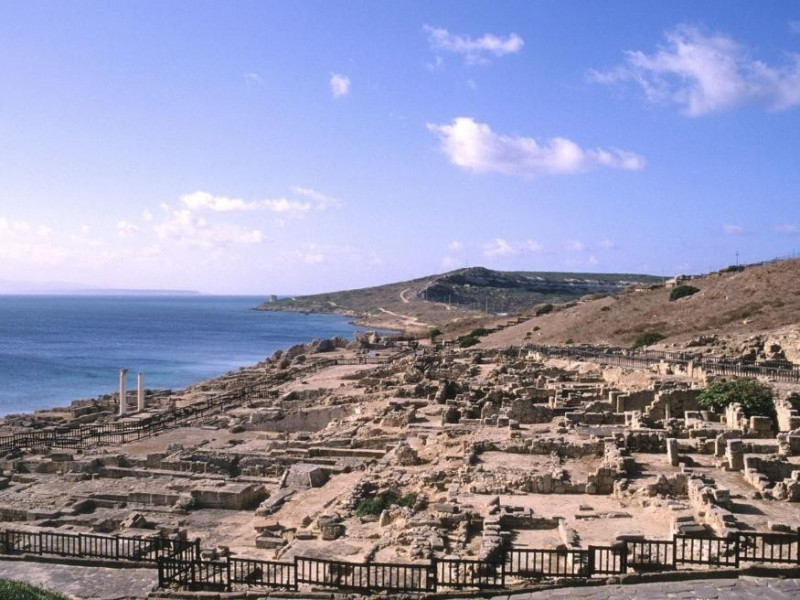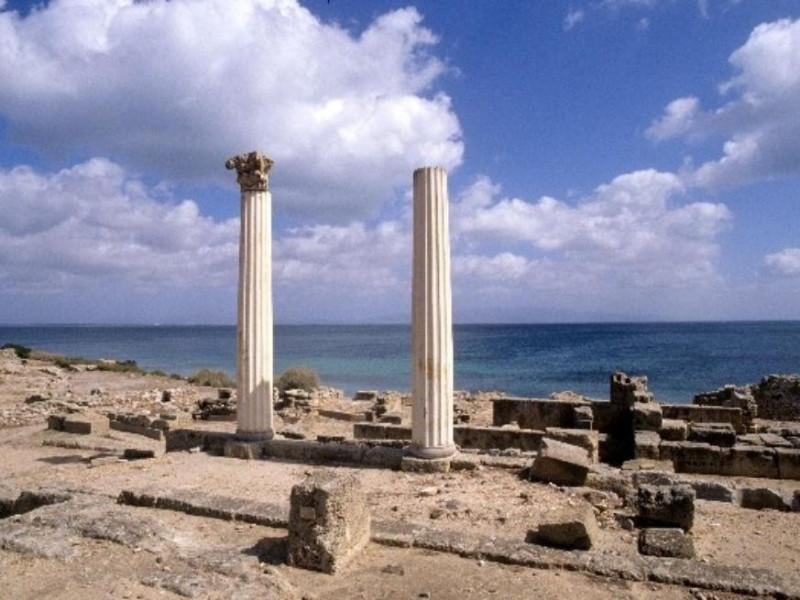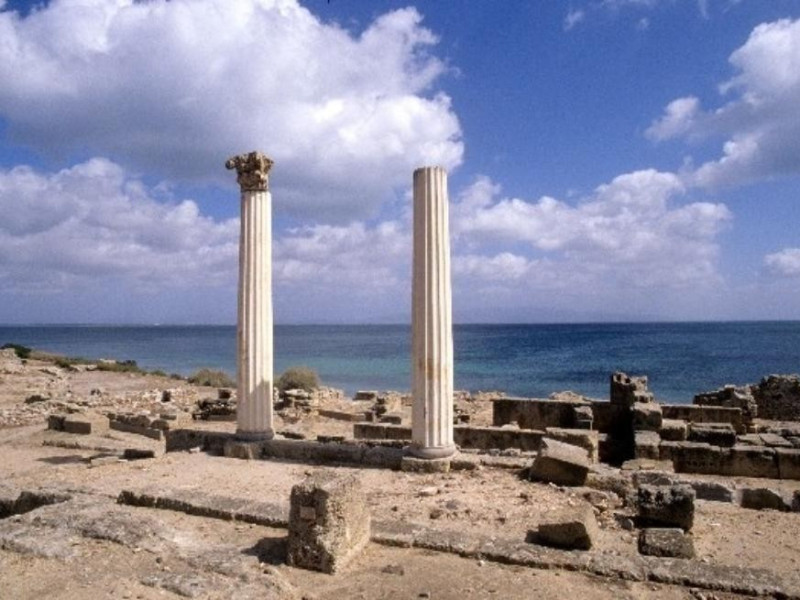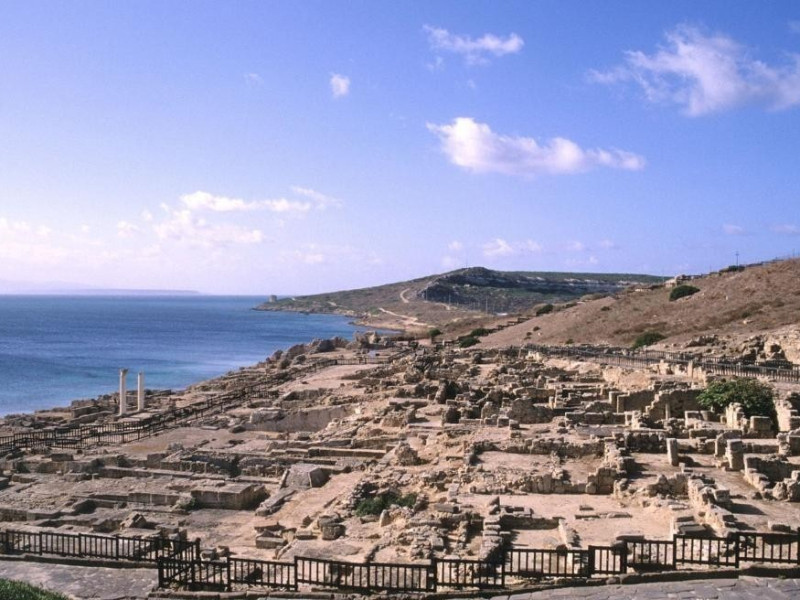Area Archeologica di Tharros
The ancient city of Tharros lies, between sea and ponds, in the beautiful landscape of the Penisola del Sinis, among Capo San Marco, the hill of the Tower of Saint John and the high ground Su Murru Mannu. The archaeological site is the result of different cultures%u2019 superimposition from the Punic age to the early Middle Ages. The first evidences in this area date back to the Nuragic period (1500-1200 BC), but the city of Tharros was founded at the end of the 8th century BC by Phoenician colonists maybe coming from the city of Sidon. The most important areas are the necropolis and the small temple of Capo San Marco, the necropolis of San Giovanni di Sinis and the Phoenician tofet Su Murru Mannu. Recently also the ancient Phoenician- Punic port was brought to light, south of the western side of the Mistras pond. From the end of the 6th century to 238 BC, Tharros became the object of territorial and trade interests of Carthage thanks to its strategic position. In that period the city suffered many transformations. The remains of the great wall on the high ground Su Murru Mannu, the rich south and north necropolises, the Punic tofet, temples with Doric semi- columns and the distyle temple (restored during the Roman- Republican period) date back to this age. In 238-237 BC, Tharros was conquered by the Romans. The slow but progressive Romanization of the city is testified by the northern wall and the distyle temple on the Colle di San Giovanni. The most important evidences date back to the Imperial period (1st century BC- 4th century AD): thermal baths, the remains of a small amphitheatre, an important road and sewage system, the aqueduct, the castellum aquae, the forum and several temples. Among the few remains from the early Middle Ages, worth mentioning is a baptismal basin dating back to the 5th- 6th century. Tharros, the first capital city of the Giudicato d%u2019Arborea, was abandoned in 1070.
Not accessible to disabled people.
